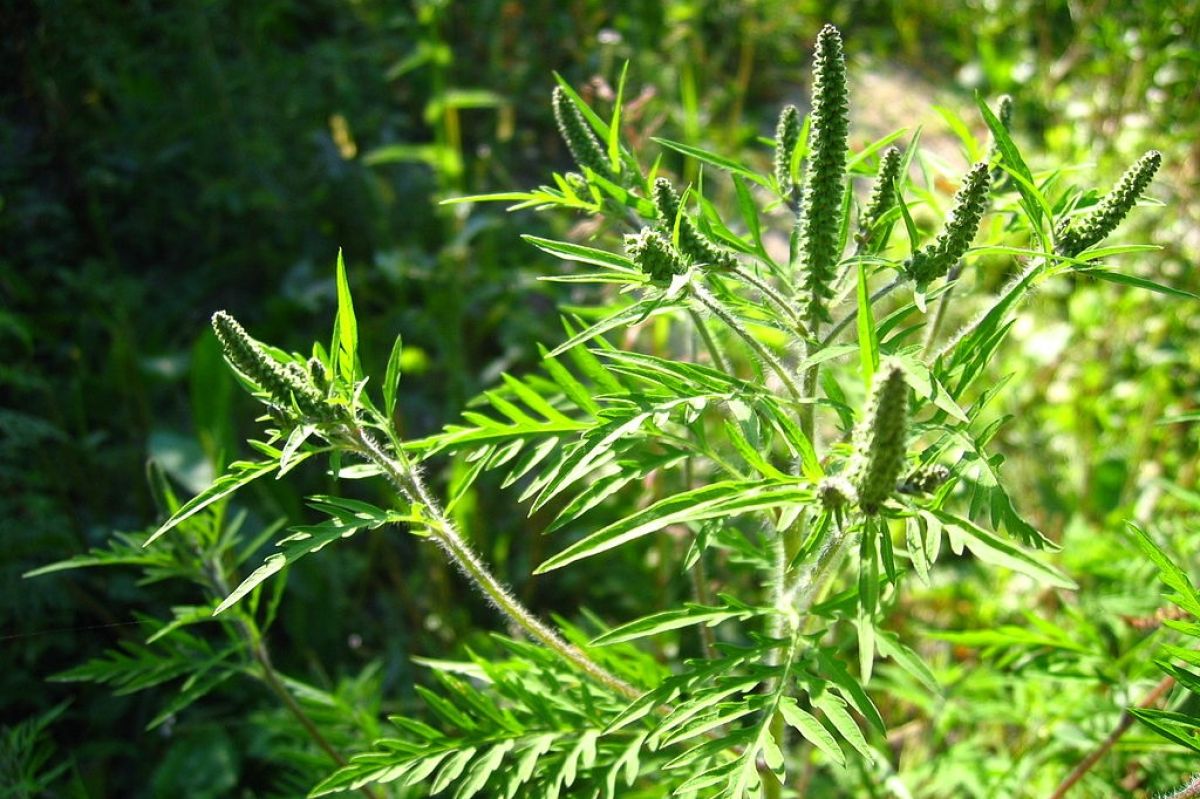
Ambrosia (ragweed) (Neoneo13, wikimedia)
It is the flowering trees and plants that are wind pollinated that are the ones that cause problems for humans with allergies. Flowering plants, that are pollinated by insects, are usually not problematic at all for allergy sufferers. Fortunately, the insect-pollinated flowers have the pretty colorful blossoms, designed to be attractive to bees.
Ragweed, a major culprit in triggering autumnal allergies, is a prime example of a troublesome plant with a non-descript flower. There are 15 species, and the botanical name is much prettier than the plant: it is Ambrosia.
It grows wild from coast to coast in any location it can find. Its leaves are ferny, and its blooms are tiny and pale green, with little bits of light pollen easily spread by the wind. It blooms at the same time as goldenrod, which produces bright yellow flower heads, heavy with pollen, attractive to bees.
Thankfully, most of the flowers that we love in our gardens are pollinated by insects. They include treasures such as crepe myrtle, cosmos, petunia, zinnia, hydrangea, itea, rose, iris, columbine, aster, daylily, chrysanthemum, black-eyed Susan, anemone, and lots of our other favorite flowers.









